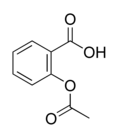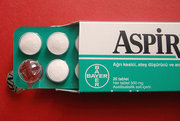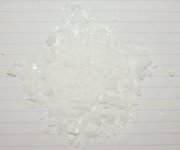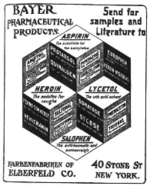Business Editors
NEWARK, Del.--(BUSINESS WIRE)--Feb. 27, 2003
Strategic Diagnostics Inc. (Nasdaq:SDIX) - a leading provider of antibody products and analytical test kits for the food safety and water quality markets, today reported financial results for the fourth quarter and year ended December 31, 2002.
Revenue for the fourth quarter of 2002 was $6.3 million, compared with $6.6 million in the fourth quarter of 2001. The net loss in the fourth quarter totaled $113,000, or $0.01 per share, compared to a net loss of $763,000, or $0.04 per share, in the prior year quarter. For the year ended December 31, 2002, revenues were $23.8 million, versus $29.4 million in the prior year. Net loss for the year totaled $912,000, or $0.05 per share, down from net income of $1.1 million, or $0.06 per diluted share in the prior year.
Revenues for the water quality category increased in 2002, primarily due to increasing sales of the Microtox(R) toxicity screening systems. More than 50 North American water systems, most of which serve more than 100,000 households, currently utilize the system for drinking water. The Company continues to work with customers as they assess their vulnerability to threats of intentional contamination as currently required under U.S. law and is expanding its efforts to market its Microtox(R) test systems to potential customers in the food and beverage industry. The increase in Microtox(R) sales has been somewhat offset by a decrease in sales of tests in the remediation market. Sales in this category during 2002 were slower due to weak general economic conditions and harsh weather experienced during the winter. The Company expects water quality revenues to grow in 2003, particularly due to increased demand for Microtox(R) and its attendant consumables as water processors and users have a heightened awareness of the potential threat of chemical contamination, intentional or otherwise.
The Company was recently awarded a 2002 Business Achievement Award from Environmental Business Journal (EBJ) for its work in developing Microtox(R) Technology into an effective Homeland Security technology. In its announcement of the award, EBJ stated it was awarding the Company its 2002 Homeland Security Award "...for rapidly deploying the Microtox(R) technology it acquired from AZUR Environmental in 2001 to water quality security applications. Used predominantly for wastewater and research prior to 9/11, SDI developed additional protocols and application notes and as of the end of 2002 Microtox(R) is being used by more than 50 major drinking water utilities across the country." Also recently, American Water Company adopted the Company's Microtox(R) toxicity testing technology for drinking water as an emergency response to detect intentional contamination of drinking water supplies. American Water is the largest private drinking water utility in the United States, providing drinking water services to more than 15 million customers in 27 states and Canada. The company's quality control and research laboratory located in Belleville, Illinois conducted a thorough technical analysis of the operation and detection capabilities of Microtox(R) technology. Based on the positive results of that study, AW has selected Microtox(R) technology for implementation as a rapid response analytical technology for use throughout their service areas.
Additionally, a manufacturer and processor of prepared meat products and a supplier of meat products to many major consumer brand companies has adopted Microtox(R) to test the water that is used in and on all of their products. They selected the Microtox(R) system due to its ease of use and the ease of incorporating the system into their normal food safety analytical program. Their customers have commented how pleased they are that the company is taking this action to protect the products supplied to them and, in doing so, protecting their brands.
"We are very pleased that American Water Company and food processors have selected Microtox(R) Technology as part of their comprehensive counter-terrorism drinking water monitoring program," commented Richard C. Birkmeyer, President and CEO. "We are also pleased that our work in making Microtox(R) available to serve as an early warning technology for drinking water systems has been recognized by Environmental Business Journal, a leading environmental and water industry publication. Microtox(R) technology is currently serving as a crucial part of the drinking water security monitoring programs of many major drinking water utilities across the country. Microtox(R) provides the best means available for rapid detection of the actual chemical impact and increase in toxicity from an intentional contamination of drinking water. We are pleased that Microtox(R) systems can serve in this important application to help deter the threat of terrorism and we will continue to work with more and more major drinking water utilities, as well as food and beverage companies, to maximize the utilization of this important application of Microtox(R) technology."
Food safety revenues decreased in 2002, primarily due to the significant decline in sales of StarLink(TM) test kits from record sales levels in 2001, as the removal of StarLink(TM) corn from the nation's grain supply commenced late in 2000. StarLink(TM), which has been approved only for non-food uses, was discovered in food products in 2000 and resulted in the need for growers, handlers, processors, shippers and exporters to test corn for the presence of StarLink(TM). The Company believes that reliance on genetically modified organism (GMO) technology continues to grow both in the U.S. and abroad, and that as a result, demand for the Company's GMO testing products, other than tests for StarLink(TM), will increase as well. Sales of Company's GMO tests for cottonseed increased during 2002 and the Company believes it now supplies every major cottonseed company (in terms of seed sales) in the U.S. Many countries outside the U.S. and Canada have adopted labeling regulations relating to GMO content that could stimulate demand for the Company's GMO tests as food manufacturers develop protocols to comply with these regulations.
Since the July 2002 launch of the RapidChek(R) lateral flow test for E. coli O157, several field evaluations have been performed by major independent laboratories. The results from these evaluations have prompted a globally recognized food safety laboratory corporation to begin a nationwide implementation of the RapidChek(R) E. coli O157 test method into its testing protocols. This corporation expects its implementation to be complete by the end of March 2003. Also, a leading global foodservice provider has completed an in-depth study of the RapidChek(R) E. coli O157 test method. According to statements made by the foodservice provider, the findings of this study revealed that laboratories performing the RapidChek(R) test found a 65% reduction in overall false positives when compared to a well-recognized competitive test, and that RapidChek(R) showed greater sensitivity and was easier to use than the competitive brand. This foodservice provider has endorsed the use of RapidChek(R) tests for E. coli O157 testing by its meat suppliers. Several of these meat suppliers initiated use of RapidChek(R) in January 2003. Another significant evaluation performed by a U.S. regulatory agency has shown that the RapidChek(R) E. coli O157 growing media performs better than other leading brands in either 8-hour or 24-hour methods. Based on the foregoing, the Company expects to attract a meaningful share of the worldwide E. coli testing market.
In January 2003, the Company conducted the commercial launch of its newest food pathogen test to detect salmonella in food. Salmonella is the most common food pathogen and is found in a wide variety of foods including meats, dairy and processed foods. The Company's new test has several advantages over competitive methods including a simplified preparation process that makes the test easier to perform versus competitive brands. The product's performance standard meets all necessary regulatory requirements. The Company has submitted the salmonella test for third party validation by the AOAC Research Institute and key evaluations are currently underway with major food companies and laboratories. The Company expects to complete a licensing agreement of a lateral flow reading instrument to read and record test results from its food pathogen lateral flow strip tests, including the strip test used to detect salmonella.
In another development, the Company announced the release of its screening test for the detection of meat and bone meal in animal feed, which is linked to the transmission of BSE, commonly known as mad cow disease. This test, known as FeedCheck, was designed in a lateral flow format to be more sensitive and easier to use than other rapid, on-site methods. Compared to certain competitive products, this test does not require weighing or boiling of samples. By eliminating these steps, the FeedCheck test is faster, easier to use and will not require equipment such as scales and heating devices. The method for animal feed has been designed with multiple tests per strip to address the various analytical requirements throughout the world. SDI's product has been shown to detect as little as 0.1% bovine meat-and-bone meal in feed. These product features are important to comply with customer specifications and governmental regulations throughout the U.S., Europe and Japan. The test was developed in collaboration with Molecular Circuitry, Inc. and sponsored by McDonald's. Additionally, the Company's research and product development efforts are continuing toward the completion of new products, including tests for the food pathogen listeria.
Antibody segment revenues declined slightly in 2002 as the Company completed the consolidation of its San Diego, California, operations into a single site at its Maine location during 2002. Several new or expanded relationships were established during 2002 as customers and prospects had the opportunity to validate manufacturing and quality procedures at the expanded manufacturing facilities in Maine. The Company believes that these relationships are designed to develop into increasing sales, as the antibody division earns additional projects under these relationships. The Company's project to develop a point-of-treatment diagnostic test for Bayer's new product Repinotan(TM) is continuing with Bayer's Phase III clinical trials expected to be completed during 2003.
Fourth quarter manufacturing expenses were $3.6 million in the fourth quarter of 2002 compared to $4.3 million in the prior year fourth quarter. For the year, these expenses totaled $12.3 million in 2002 down from $14.5 million in 2001. The decrease for the quarter and year is primarily attributable to lower StarLink(TM)-related sales volume in 2002. For the year, gross profits (total revenues less manufacturing costs) decreased $3.4 million or 23% to $11.4 million and gross margins declined to 48.1% in 2002 from 50.6% in 2001. The decline in gross margins is primarily attributable to the fact that the Company's utilization of its manufacturing capacity was reduced as compared to 2001, a result of lower sales volume during 2002, resulting primarily from reduced StarLink(TM)-related sales. The Company instituted several initiatives late in the fourth quarter 2002 and early in the first quarter 2003 to leverage its manufacturing capacity and improve its production yields. One such effort is the elimination of separate test kit and antibody business units, resulting in a single manufacturing organization.
Research and development expenses increased slightly to $850,000 in the fourth quarter of 2002 compared to $812,000 in the prior year fourth quarter. For the year these expenses totaled $3.3 million in 2002 versus $3.0 million in 2001. These increases are primarily due to continued investment in the animal feed test and the lateral flow food pathogen tests.
Selling, general and administrative expenses decreased to $2.3 million in the fourth quarter of 2002 from $3.0 million in the prior year fourth quarter primarily due to the Company's efforts to lower its expenses, including the consolidation of its antibody facilities in Maine. For the year, these expenses were essentially flat at $10.3 million. These expenses are expected to decline in 2003 as the Company has stepped-up its efforts to streamline its operations, including creating a single sales and marketing organization, which had previously been organized in three distinct teams in the water quality, food safety and antibody product categories. The Company believes that its new sales organization structure is more efficient and will be more effective in addressing all of the Company's market opportunities.
Commenting on the recent product introductions and market opportunities, Mr. Birkmeyer said, "We continue to build on our reputation for quality products. We expect these new food safety products to complement the growth of our sales in our water and antibody products and together drive increase in 2003 revenues. The recent organizational changes allow us to leverage our staff and position us to meet the growth in revenues with improved profitability."
In another development, the Company reported that its commercial bank waived the loan covenant covering the required level of EBITDA for the fourth quarter of 2002 and has amended the loan covenants to a minimum quick ratio of 2.25 and a minimum tangible net worth of $22.5 million for the first three quarters of 2003. Beginning with the fourth quarter of 2003, the original provisions of the loan agreement regarding financial covenants will be operative, namely a ratio of EBITDA to current maturities of debt plus interest and cash paid for taxes and a ratio of funded debt to EBITDA. The Company reported cash and working capital of $2.1 million and $12.5 million respectively at December 31, 2002.
Conference Call
A conference call to review fourth quarter results is scheduled for 11:00 a.m. EDT today. The dial-in number for the live conference call will be 703/871-3794. A live webcast of the conference call will be available on the Company's Web site, www.sdix.com, as well as www.on24.com. For those who cannot listen to the live broadcast, an audio replay of the call will be available on these sites for 30 days. Telephone replays of the call will be available from 2:00 p.m. EDT on February 27 through 11:59 p.m. on February 28. To listen to the telephone replay, dial 888/266-2081 (703/925-2533 outside the U.S.) and enter passcode 6411294.
About Strategic Diagnostics Inc.
SDI is a leading provider of biotechnology-based diagnostic tests for a broad range of agricultural, industrial, and water treatment applications. Through its antibody business, Strategic BioSolutions, Strategic Diagnostics also provides antibody and immunoreagent research and development services. SDI's test kits are produced in a variety of formats suitable for field and laboratory use, offering advantages of accuracy, cost-effectiveness, portability, and rapid response. Trait Check(TM), GMO QuickCheck(TM), and GMO Check(TM) are pending trademarks for SDI.
This news release contains certain forward-looking statements reflecting the current expectations of Strategic Diagnostics Inc. and its subsidiaries (the "Company"). These statements include, among others, statements regarding: the Company's intentions with respect to future spending on research and development; the development, market acceptance and sales of tests for food-borne pathogens and related growth media; the size and nature of demand in the markets for the Company's products and related effects on operating results; the need for water quality and toxicity tests; anticipated increases in sales of the Company's Microtox(R) toxicity screening systems; the implementation by a globally recognized food service laboratory and by the meat suppliers to a leading global foodservice provider of the Company's RapidChek(R) E. coli O157 test method; approval and validation by third parties of the Company's food pathogen tests; the performance of the Company's testing products, the Company's ability to complete a licensing agreement relating to a lateral flow reading instrument; the amount of the Company's contract revenue, sales of the Company's antibodies; the Company's development of a point-of-treatment diagnostic test for Repinotan(TM); anticipated increases in gross margins, timing of new product introductions and other information that may be predictive of future operating results; the Company's ability to reduce operating expenses; and the Company's ability to improve operating results thus enabling it to meet future loan covenants. In addition, when used in this news release, the words "anticipate," "enable," "estimate," "intend," "expect," "believe," "potential," "may," "will," "should," "project" and similar expressions as they relate to the Company are intended to identify said forward-looking statements. Investors are cautioned that all forward-looking statements involve risks and uncertainties, which may cause actual results to differ from those anticipated at this time. Such risks and uncertainties include, without limitation, changes in demand for products, delays in product development, delays in market acceptance of new products, retention of customers, attraction and retention of management and key employees, adequate supply of raw materials, inability to obtain or delays in obtaining third party approvals, or required government approvals, the ability to meet increased market demand, competition, protection of intellectual property, non-infringement of intellectual property, seasonality, the ability to obtain financing and other factors more fully described in the Company's public filings with the U.S. Securities and Exchange Commission.
COPYRIGHT 2003 Business Wire
COPYRIGHT 2003 Gale Group




